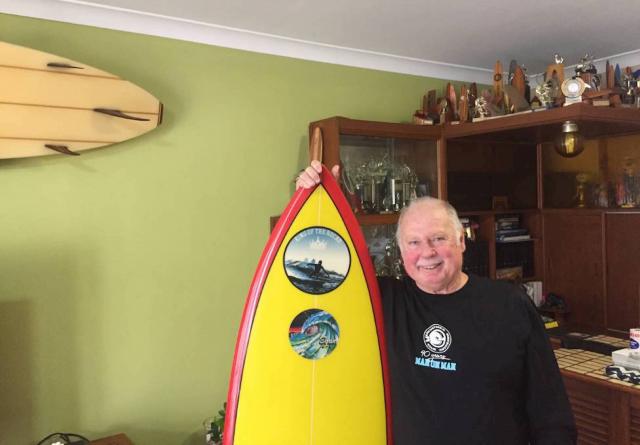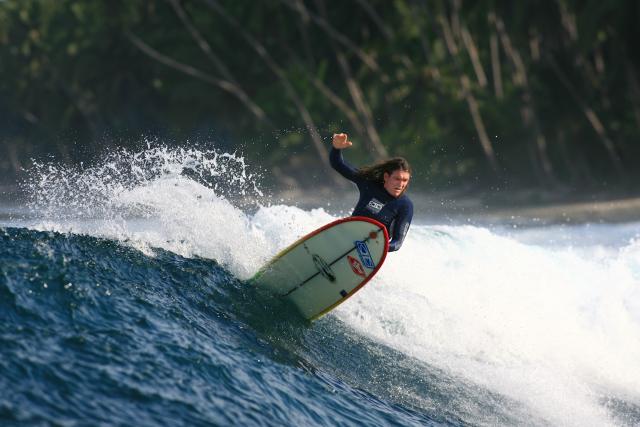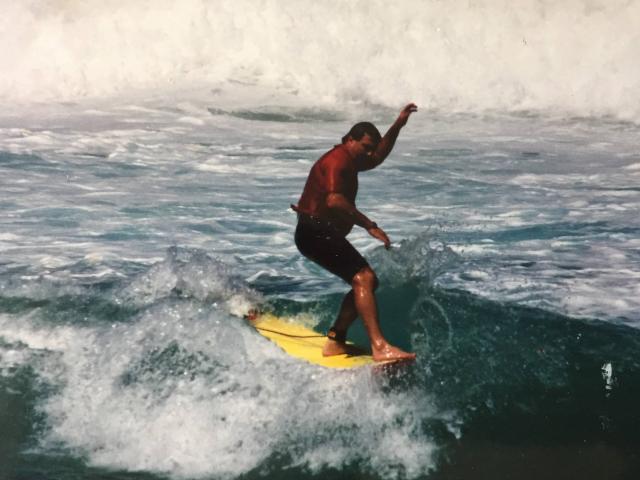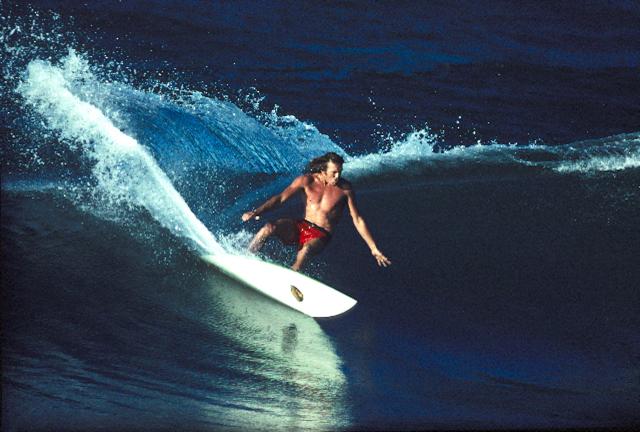With not much to cheer about in the swell department around here, and the WSL event at Jeffrey’s Bay still to kick off as I write, let’s look back again this week at the contributions of two wonderful surfers who always put their clubs ahead of personal glory.
Radical Rog
Legendary surfing hero of the Hunter Valley Roger Clements died back in May just a few days after celebrating his 71st birthday.
The cancer that had laid him low some years ago returned with a vengeance and claimed him in a matter of months, ending the long career of one of Newcastle’s best-loved surfing identities.
I first met Rog when I went to work as a journalist in Newcastle in 1970, living in a shabby little flat my company provided halfway between Nobby’s and Newcastle Main Beach.
Starting work around lunchtime, I would walk 200 metres north or south, depending on wind and tide, and surf every morning. Many mornings Roger Clements and a little kid called Mark Richards, who looked like he might burst into tears when you said hello, would share the waves of Newcastle’s left point.
Not yet a teenager, MR already had a commanding backside attack, but it was Rog who caught the eye with his trademark “nutcracker” cutbacks.
I’d first seen him perform these at state titles on the transition boards of the late 1960s, but on the more advanced shorties, his cranking turns were next level. Not pretty, but they left a lot of spray.
I also saw him pull off some amazing backhand re-entries on the point at his home beach of Merewether, and by the early ‘70s the surf magazines were calling him one of the three best and most radical goofy-foot surfers in the country, alongside the two Col Smiths.
When he was selected in the Australian team for the 1972 world titles in San Diego, Surfer magazine in the US described him as “probably the most radical boardrider in the country”.
In its obituary the Newcastle Herald noted: “Clements was raised at Crescent Head on the mid-north coast and moved to Merewether at the age of 15.
“He was a truly gifted surfer and a charismatic individual whose rise to the upper echelons of competition happened just before the real professional era began, and so it was as much for love as it was for money that he chased waves and titles all over the country.
“His surfing prowess also eased open other doors and Clements was for many years one of the voices of surfing in the Hunter, filing daily surf reports for radio stations as well as regular columns for the Herald.”
In the longboard era Rog proved himself to be a champion all over again, but his club always came first, and in his case it was the strong, community-minded Merewether Surfboard Club, where he was one of only two surfers to be club champion, club president, a life member and inductee to its hall of fame.
Rog left behind Janelle, his wife of 44 years, two children and four grandchildren.
Deaney
Quiet, shy Wayne Deane’s competitive record covered four decades and virtually every aspect of surfing, from longboarding to shortboarding and back again.
Never in the frontline of Australian surfing heroes, he was nevertheless one of our most respected surfer/shapers and one of the most influential figures in the sport.
Born in Queensland in 1952, Wayne and brother Robbye grew up on the southern Gold Coast’s beaches. They were both naturally gifted surfers, but it was Wayne who began to stand out as a teenager, particularly at Kirra, where his smooth, flowing style seemed admirably suited to the sand barrels. The same age as Michael Peterson and just a little ahead of Peter Townend and Rabbit Bartholomew, Deaney was never recognised as one of the Coolangatta kids who set the benchmark on the Queensland points in the early 1970s, but he was very much a part of it, and even mentored his competitive rivals.
Although he competed in several professional events in the 1970s (notably the Stubbies at Burleigh Heads), Deaney was never really interested in surfing for money, preferring to compete at club, state and national amateur levels.
He was a founding member of Snapper Rocks Boardriders Club as a grom in 1964, and later served as president and became a life member, but his community involvement extended beyond that precious surf break, and when local surfers decided to form a lobby group to have Kirra Point returned to its once-perfect lines, he became chairman of the committee, lobbying industry and government to protect the iconic break.
Deaney took out two senior Australian titles in the 1980s, and when the longboard renaissance took hold in the 1990s, he was an absolute star. He won the longboard division of the 1990 amateur world championships in Chiba, Japan, finished fifth in the 1995 world professional championships and took out the 2000 Australian longboard nationals.
Deaney was also one of Australia’s finest surfboard shapers, with a large following of customers who would ride nothing else. He was obsessive about testing his equipment, to the point where on an Indonesian surf trip in 2006, he took along 15 surfboards to trial.
On that trip I persuaded Wayne, an intensely private person who had given few interviews, to tell me his story, and he agreed. We spent hours taping his thoughts, but in a baggage mishap, I lost the tape recorder. When I told him, Deaney seemed relieved.
“It wouldn’t have been that interesting anyway, mate.”
Wayne Deane died of cancer in July 2018, leaving behind wife Colleen and sons Jimmy and Noa. He would have been 70 this month.





![[READER COMPETITION] – Win tickets to see Sharon and Slava Grigoryan present ‘OUR PLACE’](https://noosatoday.com.au/wp-content/uploads/2025/07/sharon-and-slavav-324x235.png)




